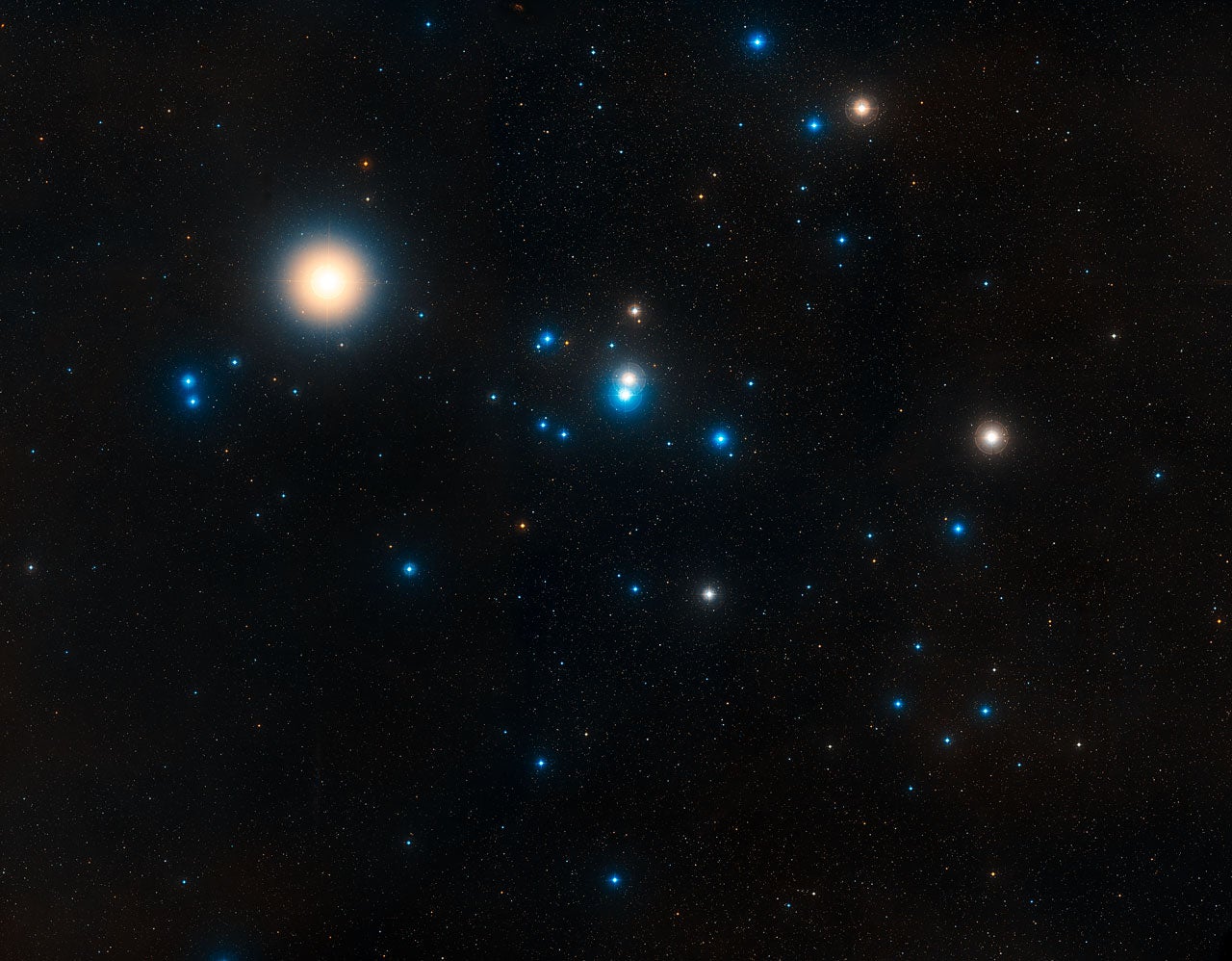
Astronomers have discovered that the closest black holes to Earth may exist in the Hyades star cluster. Observations made with the Gaia satellite suggest that several black holes likely exist in this nearby group of stars. The results were recently published in Monthly Notices of the Royal Astronomical Society.
The Hyades is an open cluster that lies 153 light-years away and makes up the head of the Bull in the constellation Taurus. As one of the closest star clusters to us, any black holes found there would be the nearest known black holes in the universe.
“This observation helps us understand how the presence of black holes affects the evolution of star clusters and how star clusters in turn contribute to gravitational wave sources,” Mark Gieles, an astrophysicist at the Universitat de Barcelona and co-author of the study, said in a statement. “These results also give us insight into how these mysterious objects are distributed across the galaxy.”
Open clusters are young, gravitationally bound groups of tens to hundreds of stars. The older, evolved, and most massive stars within open clusters are likely candidates to produce black holes at the ends of their lives.
Taurus is a great constellation for studying open clusters. Two of the brightest lie within this constellation: the Hyades and the Pleiades (M45). Because it is the larger, closer, and brighter of the two, the Hyades is one of the best-studied open clusters. The V-shaped group formed about 625 million years ago and its stars are spread over a diameter of about 20 light-years.
Finding hidden black holes
Because detecting black holes is difficult — they are black, after all — Gieles’ team used computer simulations to determine whether the Hyades might contain black holes. The team combined information about the stars’ mass with data collected from Gaia to track the movement and evolution of the stars in the Hyades cluster. Scientists then compared the true positions and movements of the stars in the Hyades to the simulation results.
“Our simulations can only simultaneously match the mass and size of the Hyades if some black holes are present at the center of the cluster today, or until recently,” said lead author Stefano Torniamenti, an astrophysicist at the University of Padua and lead author of the study.
The simulations match the Hyades observations well when they assume two or three small black holes in the cluster. However, simulations in which black holes were ejected from the cluster less than 150 million years ago also match the observations. That’s because even after they’re gone, the previous presence of black holes can leave hints of their presence in the motions of the stars for some time.
The findings suggest that black holes either still lie inside the cluster or remain close to the group, only recently having been kicked out. Thanks to the Hyades’ proximity, any associated black holes would be the closest yet known to the Sun.
Overall, the study suggests that the distribution and motion of stars gives researchers a promising way to look for black hole signatures in open clusters. Although this study has demonstrated the likelihood of black holes within the Hyades, no black hole has yet been observed directly, and more observations need to be made to know for sure.









